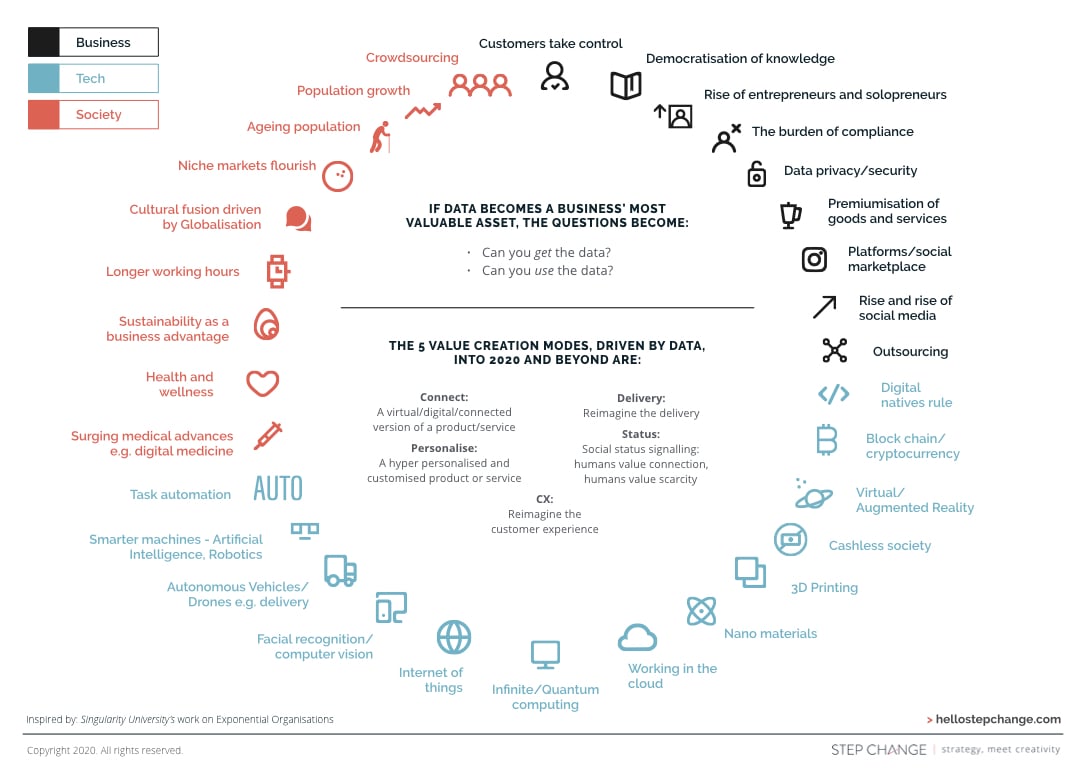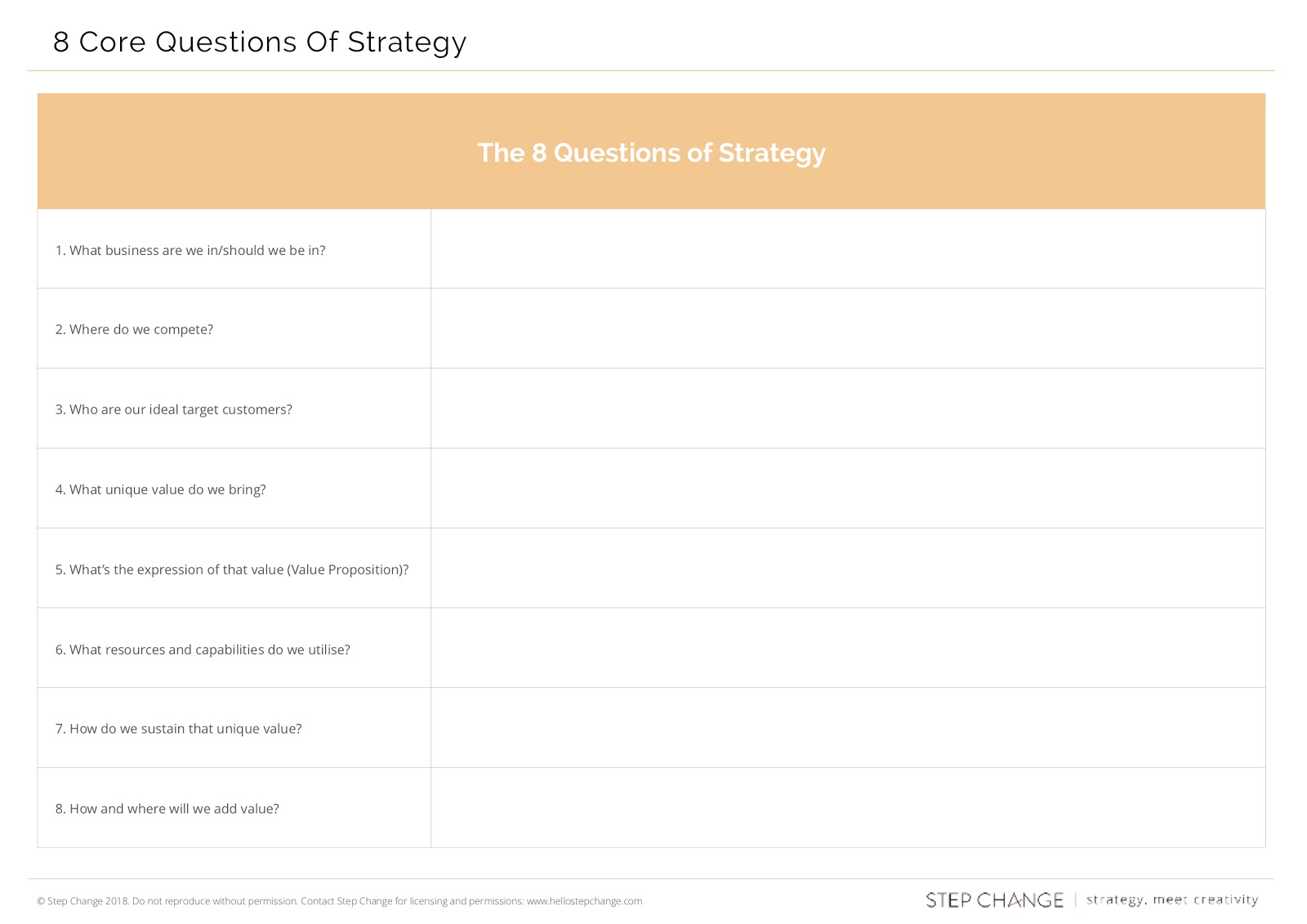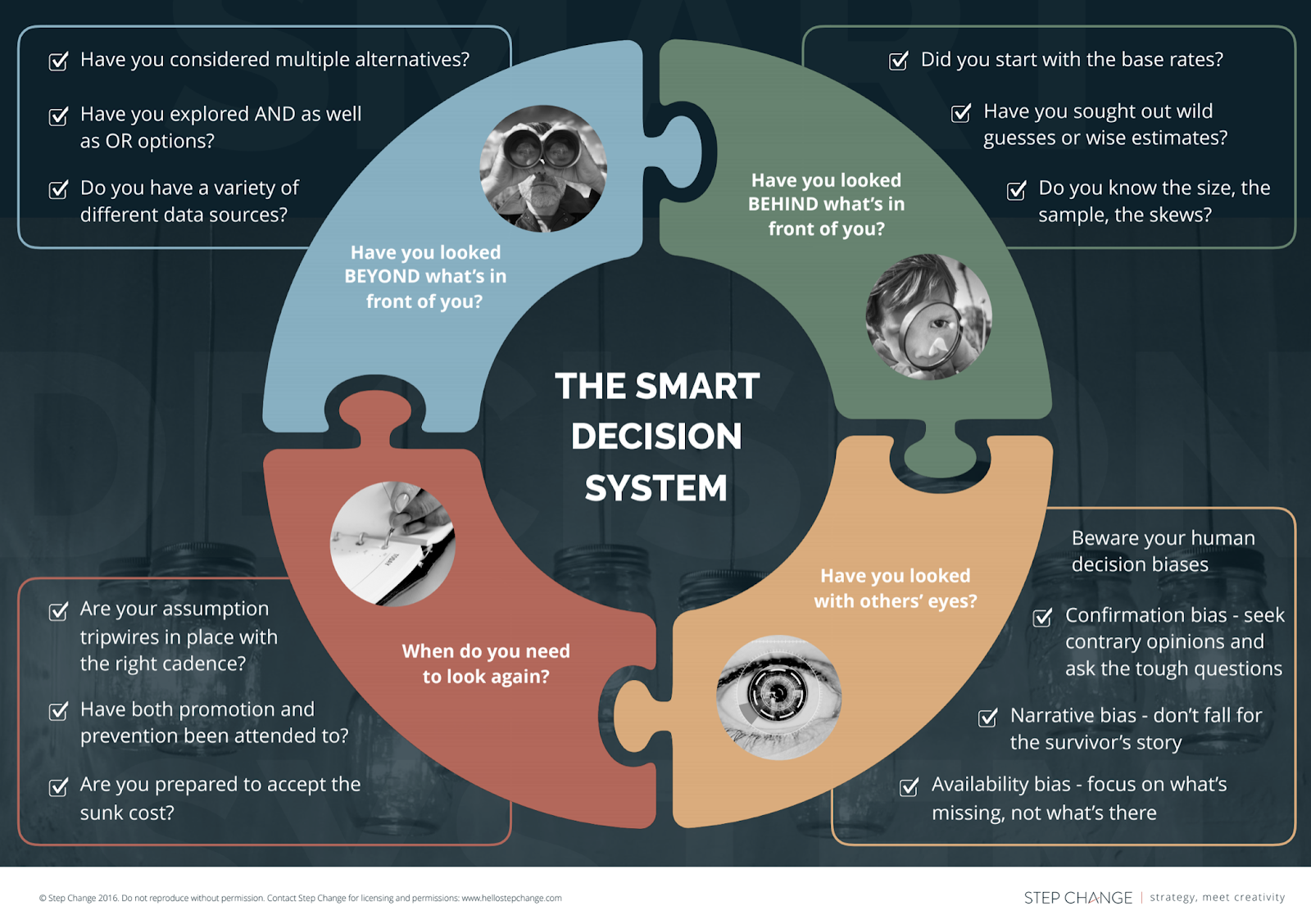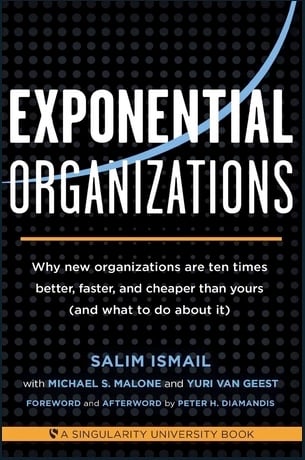Many Australian companies are complacent about the effect of disruption in their industries. But disruption today can displace market leaders, their products, and their services. Responding to disruption means businesses need to think fast and act fast.
Insight: Many businesses facing disruption today have no clear strategy in place to answer it. But the best response to disruption is smarter and rapid decision-making.
Data: 51% of executives in a survey report a high level of risk to their organisation (in terms of market share and revenue) over the next five years from technology-driven disruption by startups or innovations by incumbent companies. (Forbes Insights)
Key Action Point: Use the SODA loop to guide you in building, adapting, and implementing the right strategy to be one step ahead of disruption.
No matter the string of innovations happening in today’s marketplace, the key to be one step of the disruption wave in your industry is by having a clear understanding of your market, your competitors, and more importantly, your customers.
Many business leaders also believe that to be one step ahead, businesses need to think fast and act fast. Using the SODA loop dynamic is a great way to achieve this.
What Is the SODA Loop?
A Harvard Business Review article by experts at Boston Consulting Group shared a dynamic SODA loop, which guides chief decision-makers into focusing on what matters to respond to disruption.
The SODA loop stands for:
- SCAN the landscape
- ORIENT yourself
- DECIDE how to respond
- ACT quickly
In this article, I will dive into why these steps are crucial. I will also share some tools we use at Step Change to create strategies for clients to respond to disruption.
Scan
Scanning the landscape means being aware of the current market, looking for trend lines, new customer behaviours, anomalies, emerging competitors, and changing demand patterns.
In a previous post, we talked about the strategic radar and how it can help you unlock business opportunities. When you’re looking to respond to disruption, the radar presents you with 29 disruption factors and 8 essential questions to help you understand how your business fares with the current context.
Click the image to download the sheet.
Orient
At Step Change, we believe strategy arises out of context. The key here is to know where your business is at the moment and assess what you have as a competitive advantage versus what you don’t — this way, you can adjust your strategy.
By answering our 8 Core Questions of Strategy, you can build and execute a strategy that is tailored to how the world works and enrich it with everything necessary to be effective and relevant today.
Click the image to download the sheet.
Decide
In this stage, it is important to identify the changing needs of your target customers so you can adjust your strategy accordingly.
Look into what you need to do to get them to convert, and explore other areas where you can still be profitable.
This involves paying attention to your existing resources and capabilities, identifying where you’re most vulnerable, and developing the necessary talents needed to overcome them.
At Step Change, we hold workshops that take clients through The Smart Decision System, which help you take smarter risks. It involves looking into these four questions.
Click the image to download the one-pager.
- Have you looked BEHIND what’s in front of you? Have you considered all your options and other multiple alternatives? Do you have a variety of different data sources?
- Have you looked BEYOND what’s in front of you? Did you start with the base rates? Have you sought out wild guesses or wise estimates?
- Have you looked with OTHERS’ eyes? Are you aware of your human decision biases — Confirmation Bias, Narrative Bias, Availability Bias?
- What do you need to look again? Have both promotion and prevention been attended to? Are you prepared to accept the sunk cost?
Act
Putting your strategy into action may be a challenge as not everyone in your organisation might embrace your intent or understand it the way you do.
Culture affects the organisation’s ability to implement the strategy. To work towards adoption, you need to embed a bottom-line culture within your organisation, enabling you to take your intent and move it into action.
In Step Change’s Intent to Action model, you need to consider the following key points.
- Accountability is all about taking responsibility, which is the driving element in most cultures today. It involves having a clear understanding of how your organisation operates and delegates, being clear about the task at hand, and they taking ownership of what needs to be done to ensure success.
- Co-creation is all about how your team defines the way they work and what’s important to them
- Tracking is measuring what needs to shift in a way the changes behaviours.
- Innovation is all about creating a culture of continuous innovation to move the business forward.
- Organisation is creating the structures required to support and adapt to the new culture.
- No involves doing a stop audit and identifying what you need to take away to move closer to your goals.
It pays to understand your strategic intent and know the context behind it so you can make smarter decisions quickly and be able to clearly communicate this to every single person in your organisation and be aligned.
Is your strategy bottom line or bottom drawer? Get the Intent to Action deck to start embedding a disruption ready culture in your organisation.
Tying It Together
Although it can be difficult to put a stop to disruption, using the SODA loop for your business can help you always stay one step ahead.
Having the right strategy can only take you so far — you need to also develop the right culture that embraces change and promotes innovation. Using a Smart Decision System helps you take only the necessary risks to move your business forward.
You have to keep swimming with the changing tides while keeping a close watch on the changing market and your competitive advantage so you can use it to drive you forward with the laser focus to achieve your goals.


















